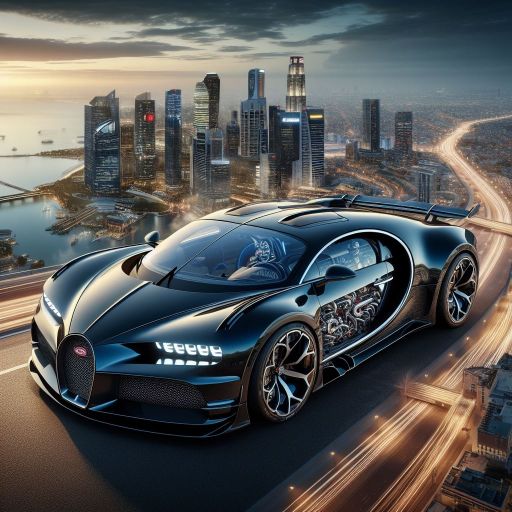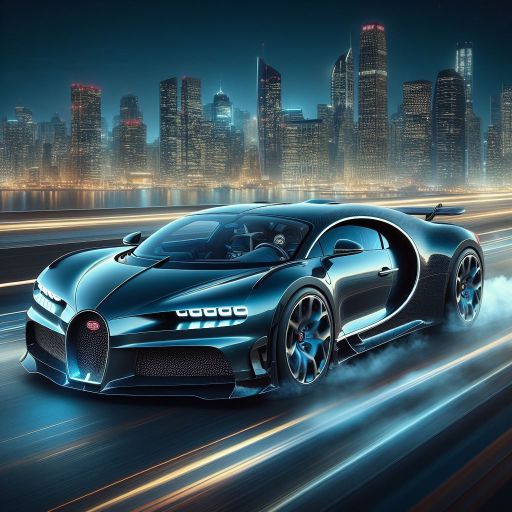Advertisement
Many reports indicate that a select few individuals have been shown Bugatti’s anticipated replacement for Chiron.
This has made the car enthusiast market very excited and inquisitive. Informative sources have started to give details about this potential masterpiece, although it's too early.
One of those confirmed details is that there has been a change from the previous powerful engine, with the new engine seated within the new carbon monocoque frame.
Instead of using a W16 quad-turbocharged system as with the Chiron, Bugatti adopted a 90-degree V16 engine design.
This shift is definitely a departure from what Bugatti has always been known for, signaling a significant development in its engineering approach towards performance and innovation.
Speculations are running high, while enthusiasts are waiting anxiously for further revelations regarding this revolutionary supercar’s abilities and design intricacies.
Gossips have it that there is an unbelievable horsepower output, aerodynamics that are made with great care, and an integration of modern methods into each aspect of the vehicle’s design.
A Little About the Bugatti Chiron
Bugatti’s Chiron is an exotic car famous for its outstanding performance and luxury standards. It has an 8.0-liter W16 engine with quad-turbochargers that can achieve up to 1,479 horsepower and a top speed of approximately 261 mph (420 km/h).
This shows how incredibly fast it is, accelerating from 0 to 60 mph in just about 2.4 seconds. Its aerodynamic and elegant design has been made from cutting-edge materials, while its interior boasts high-end artistry for a luxurious feel.
The Chiron’s cost may run into several million dollars per unit, hence making it rare as they are produced in limited numbers.
Arguably the best car worldwide, the Bugatti Chiron exudes contemporary automotive technology and engineering trends as well as being very expensive.

Unveiling Bugatti’s Revolutionary Powertrain at the Future of the Car Summit
Bugatti-Rimac CEO Mate Rimac shared insights during the Financial Times’ Future of the Car summit in London that revealed Bugatti’s forthcoming powertrain.
Autocar disclosed that, according to Rimac, a new 90-degree V16 engine has a length of 39.4 inches (1 meter), which is longer by 15.8 inches than the W16.
Moreover, Germany’s Auto, Moto, and Sport reported that with the hybrid component included, the power unit extends to nearly two meters, or about 78.7 inches.
Rimac encountered internal resistance while seeking approval for this engine. During Stephan Winkelmann’s tenure at Bugatti, there were whispers about an electric SUV project.
In spite of initial plans to create a battery-electric model on top of a Rimac chassis, Rimac was able to convince Volkswagen Group executives not to go the full EV route.
Instead, he advocated for hybrid technology, challenging dominant industry notions related to electrification dominance within his own field.
The ongoing demand for internal combustion engines validates Rimac's foresight, as indicated by current sales numbers (skepticism notwithstanding).
Advertisement
Notwithstanding considerable skepticism around the Nevera, Rimac Automobili's flagship model has still not sold out its allotted 150 production slots.
Unleashing the V16 PHEV: Bugatti’s Next Gen Powertrain
The forthcoming powertrain of Bugatti veers away from traditional turbocharged setups, instead opting for a naturally aspirated V16 configuration that has a hint of the iconic Cizeta V16T.
Referring to reports by AMS, it is stated that the collaboration between Cosworth and Bugatti has led to an 8.3-liter engine capable of revving up to 9,000 r/min and providing around 1,000 metric horsepower (986 U.S. horsepower) on its own.
This is quite a leap ahead of what the V16 in Cizeta could do at 540 hp with 400 lb-ft torque. Since no later than December 2022, this engine has been vigorously dyno-tested.
Rather than using turbos, Bugatti integrates a hybrid component projected to add another 800 hp in the final form factor for the vehicle system. This innovation could beat Mistral’s W16 best-of-breed of 1,587 hp.
The hybrid setup purportedly features one electric motor integrated into the eight-speed dual-clutch transaxle with an output of approximately 340 hp and two other motors that deliver similar power each towards manipulating the front wheel drives.

Beyond Expectations in Performance
The upcoming Bugatti supercar aims to weigh below 4,400 pounds, making it a lightweight option among its peers, weighing only 150 pounds more than the BMW M4 Competition and 500 pounds less than the Chiron.
Initial specifications indicate that it will be able to hit blistering accelerations, including projected 0-62 mph times of just two seconds, 124 mph in under five seconds, 186 mph in less than ten, and an unbelievable 249 mph in under twenty-five.
It is said that the base trim might be restricted to a top speed of around 277mph. However, it is worth noting that on the box where Marques Brownlee revealed it as being graphic, there is a speedometer extending up to 550 kilometers per hour.
This is significantly higher by an impressive 31 miles per hour, beyond what their current model offers.
There are reports that the car might be equipped with a wing, which is at variance with some opinions given recently that it is likely to depend on its underbody aerodynamics for stability at very high speeds, thus negating a wing's need.
However, such information is mere speculation; only time will tell the truth about these claims.
Additionally, although the supercar possesses a smaller wing than older Bugatti models, this one changes position slightly when driving fast, making it better in terms of fuel consumption and steadiness while moving without being affected by wind.
As Bugatti once again redefines the automotive performance benchmark, we eagerly await the public launch of their newest masterpiece.

Final Thoughts
Bugatti’s switch from the W16 quad-turbocharged engine of the Chiron to a 90-degree V16 design is an open commitment to innovation.
This change announces a fresh trajectory in their engineering philosophy that concentrates on performance and efficiency.
The new plug-in hybrid electric vehicle (PHEV) powertrain, combined with a naturally aspirated V16 engine, has been speculated to generate an astonishing 1,800 horsepower.
It is clear proof that Bugatti is pushing limits when it comes to power output and acceleration.
Advertisement





